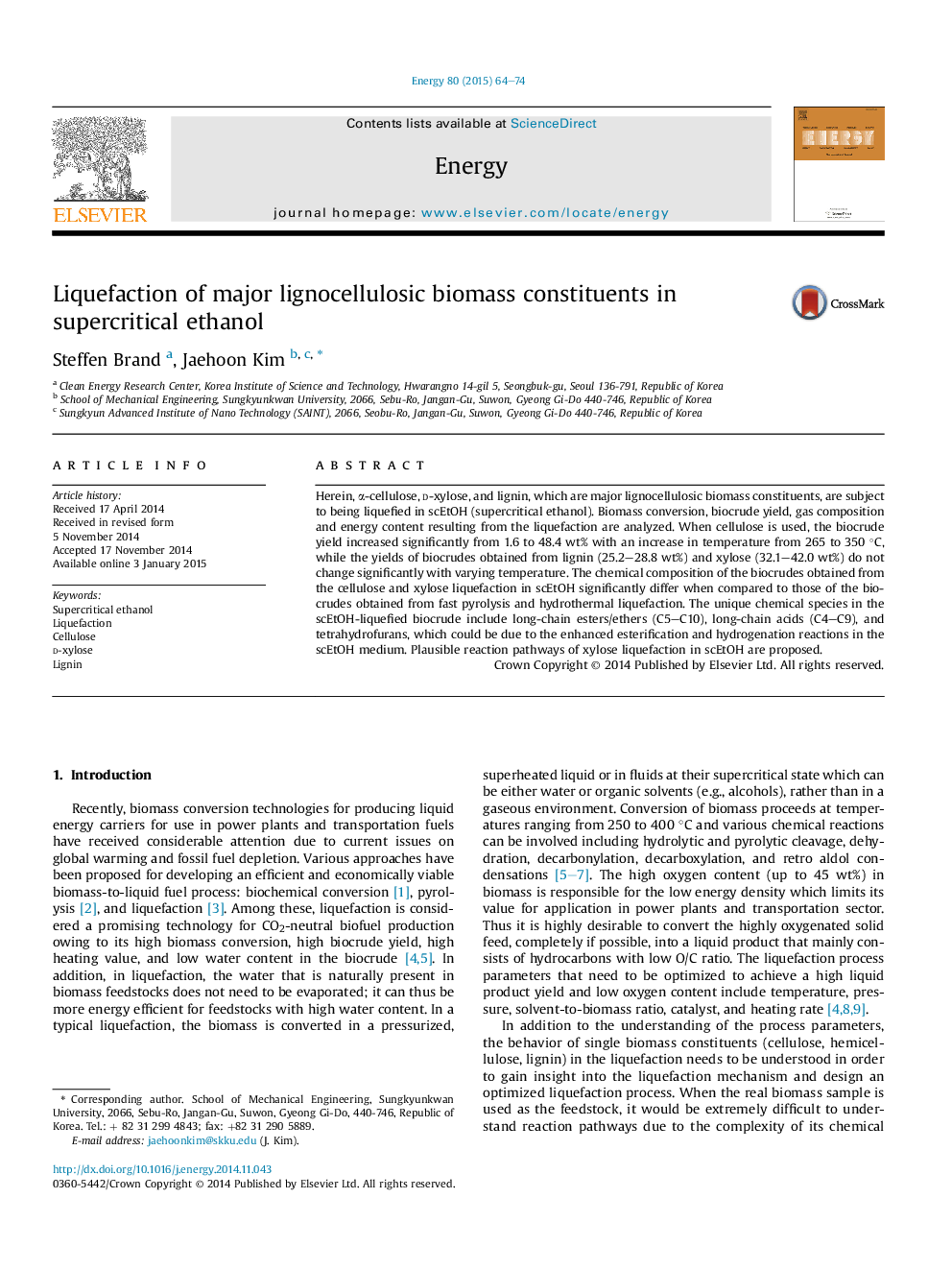| Article ID | Journal | Published Year | Pages | File Type |
|---|---|---|---|---|
| 1731987 | Energy | 2015 | 11 Pages |
•Cellulose, hydrolysis lignin, xylose are liquefied in supercritical ethanol.•Increase in biocrude yield when cellulose is used.•Biocrude yields are similar with temperature when lignin and xylose are used.•Long-chain esters/ethers/acids (C5–C10) and tetrahydrofurans form.•Esterification and hydrogenation are enhanced in supercritical ethanol.
Herein, α-cellulose, d-xylose, and lignin, which are major lignocellulosic biomass constituents, are subject to being liquefied in scEtOH (supercritical ethanol). Biomass conversion, biocrude yield, gas composition and energy content resulting from the liquefaction are analyzed. When cellulose is used, the biocrude yield increased significantly from 1.6 to 48.4 wt% with an increase in temperature from 265 to 350 °C, while the yields of biocrudes obtained from lignin (25.2–28.8 wt%) and xylose (32.1–42.0 wt%) do not change significantly with varying temperature. The chemical composition of the biocrudes obtained from the cellulose and xylose liquefaction in scEtOH significantly differ when compared to those of the biocrudes obtained from fast pyrolysis and hydrothermal liquefaction. The unique chemical species in the scEtOH-liquefied biocrude include long-chain esters/ethers (C5–C10), long-chain acids (C4–C9), and tetrahydrofurans, which could be due to the enhanced esterification and hydrogenation reactions in the scEtOH medium. Plausible reaction pathways of xylose liquefaction in scEtOH are proposed.
